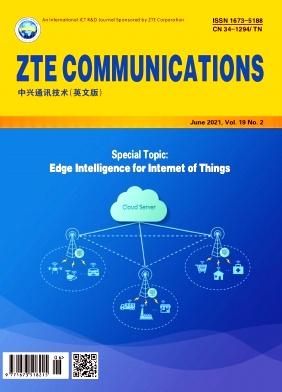Design of Wireless Energy-Harvested UHF WSN Tag for Cellular IoT
引用次数: 1
Abstract
In this paper, a wireless energy⁃harvested ultra⁃high frequency (UHF) wireless sensor network (WSN) tag is designed and imple⁃ mented for cellular IoT applications. The WSN tag is made up of a wireless energy harvesting circuit, a temperature sensing cir⁃ cuit, and a radio frequency identification (RFID) tag. The developed WSN tag is compatible with the ISO/IEC18000⁃6C protocol. The WSN tag can receive the GSM RF energy operating in China GSM900 and GSM1800 bands in the surrounding environment and the solar energy, then converts the RF energy to direct current (DC) by schottky diode⁃based rectifying circuit, and finally stores the DC energy in a supercapacitor through a DC⁃DC booster circuit. The DC⁃DC booster circuit drives the front⁃end circuit, TI MSP430 microcontroller, temperature sensing circuit, and other active circuits in the tag. The MSP430 works in low⁃power mode when it is powered up, and it can also reduce power consumption more by reducing main clock (MCLK) frequency accord⁃ ing to different forward link rates. The implemented WSN tag demonstrated that the RF⁃to⁃DC conversion efficiency is higher than 39% when the receiving 900 MHz RF signal power is from ⁃14 dBm to 0 dBm and could make the tag work normally. The signal receiving sensitivity of the WSN tag is up to ⁃32 dBm at the rate of 40 kbit/s from the Reader to the WSN tag. The WSN tag sup⁃ ports Miller coding and extended Miller coding. This wireless energy harvested UHF WSN tag, compared with conventional UHF passive tags and battery⁃powered active UHF RFID Tags, has many advantages, such as far communication distance, long service life, and sensing functionality. It will have wide applications in the Internet of Things (IoT). DC⁃DC booster circuit; MSP430; RF energy harvest; WSN tag面向蜂窝物联网的无线能量采集UHF WSN标签设计
本文设计并实现了一种用于蜂窝物联网应用的无线能量采集超高频(UHF)无线传感器网络(WSN)标签。该WSN标签由无线能量采集电路、温度传感电路和射频识别(RFID)标签组成。所开发的WSN标签兼容ISO/IEC18000⁃6C协议。该WSN标签可以接收周围环境中工作在中国GSM900和GSM1800频段的GSM射频能量以及太阳能,然后通过基于肖特基二极管的整流电路将射频能量转换为直流(DC),最后通过DC⁃DC升压电路将直流能量存储在超级电容器中。DC⁃DC升压电路驱动前端电路、TI MSP430微控制器、温度传感电路和标签中的其他有源电路。MSP430在上电时工作在低功耗模式下,并根据不同的转发链路速率降低主时钟(MCLK)频率,从而进一步降低功耗。所实现的WSN标签在接收到的900 MHz RF信号功率为⁃14 dBm ~ 0 dBm时,其RF⁃to⁃DC转换效率高于39%,并能使标签正常工作。以40kbit /s的速率从阅读器到WSN标签的信号接收灵敏度高达⁃32dbm。WSN标签支持米勒编码和扩展米勒编码。与传统的超高频无源标签和电池供电的有源超高频RFID标签相比,这种无线能量采集的超高频WSN标签具有通信距离远、使用寿命长、传感功能强等优点。它将在物联网(IoT)中有广泛的应用。DC⁃DC升压电路;MSP430的;射频能量收集;摘要:标签
本文章由计算机程序翻译,如有差异,请以英文原文为准。
求助全文
约1分钟内获得全文
求助全文

 求助内容:
求助内容: 应助结果提醒方式:
应助结果提醒方式:


